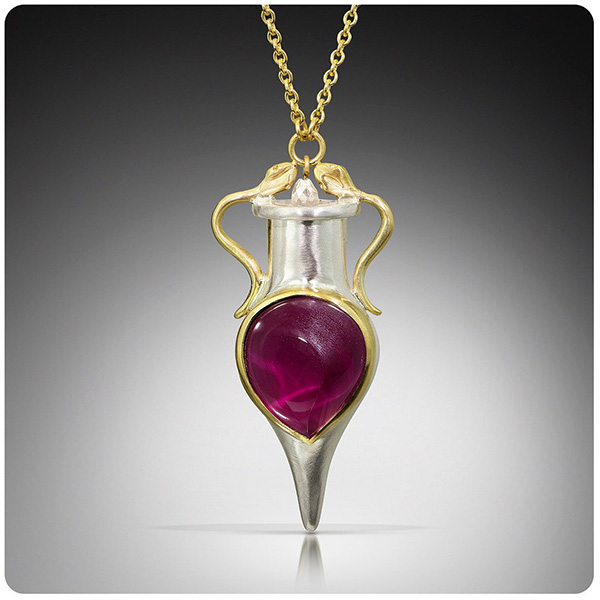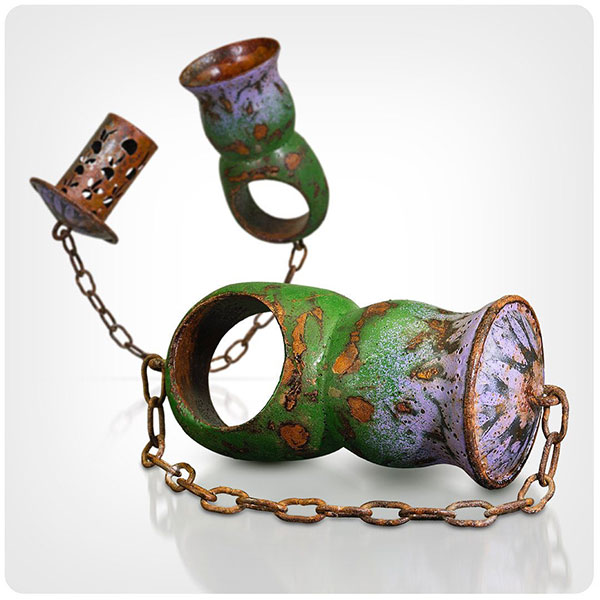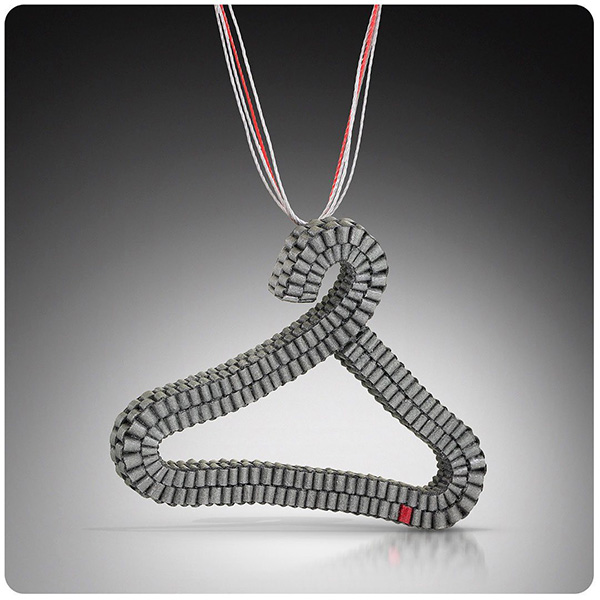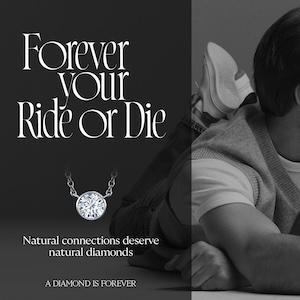
For Shauna Burke, art and jewelry are tools to highlight injustice and the challenges we collectively face as a society. So, when she saw the seismic change that would occur after the U.S. Supreme Court struck down Roe v. Wade, the jewelry designer created the Plan B project.
The group contemporary art project aimed at calling attention to a person’s right to make choices for his or her own body will go on display Nov. 15 as part of NYC Jewelry Week. This is the Plan B project’s latest stop after touring art and jewelry galleries around America, including the Heidi Lowe Gallery in Lewes, Del., and Pistachios gallery in Chicago, Burke says.
More than 70 artists participated, and the reaction from those who have seen the jewelry has been largely positive. Of the artwork available for purchase, 25% of its sales will go to support Planned Parenthood, she says.
As jewelry is art for the body, it seemed like the right project for these times, Burke says. In June, SCOTUS overturned the 1973 court case that ended the constitutional right to abortion, restoring the ability of states to ban it.

“It all says something—some of it is in your face and some is more subtle,” Burke says. “It’s been so exciting to me to see how many people said, ‘Yes,’ to being a part of it. I pulled in as many artists as I could from all ages, backgrounds, people of color, different ethnicities.… If you read about everyone and where they are coming from with their art, they are such strong statements.”
Burke says the project asked each participating artist to make something from the shape of an amphora bottle or their own interpretation of it. The amphora form is a reminder of the historical methods used to end pregnancy through abortifacient herbs and poisons, Burke explains.
The resulting jewelry as art includes rings, earrings, brooches, and pendants. Some are dramatic, such as Francesca Vitali’s Untitled (shown below), which uses paper and thread to create hanger-shape pendant. Some are gentle, like Liz Clark’s Carried on Both Sides, which features oxidized sterling silver and a lab-grown ruby to create a floral display inside an elongated bottle.

In the description of her work, Clark writes: “The word amphora comes from Greek amphi-phoreus, meaning ‘carried on both sides.’ A woman’s important right to make decisions about her body, abortion, and the weight of this decision is felt both before and after, on both sides. A weight is heavy and becomes heavier over time if carried alone. A weight is lightened and easier to carry if shared.”
Artist and jeweler Trecy Bleich created a beaded necklace using various shades of Miyuki glass to represent skin tones, which were woven into square patterns like a quilt. As the Atlanta jeweler notes, “No matter what race or background, every woman is intertwined by the issues of abortion.”
As a teacher, an artist, and a jeweler, Burke says she hopes people see Plan B as a project that inspires conversation and action. She is working on a book to highlight each art piece within the Plan B project and what the artist said about its creation and impact.
Burke also says she is thankful to the other two galleries that hosted the show: Monique Rancourt Artesian gallery in Massachusetts and Ombre Gallery in Cincinnati.
“There’s so much to scream about in our world now. I just felt instead of complaining and screaming, I had to do something in my way,” Burke says.
Top: Shelley Cavanaugh titled this piece Wishing Well as a tribute to its vessel shape, which she told the Plan B project serves “to manifest wishes that resonate with your own body, sexuality, well-being, and the choices that are right for you” (photos courtesy of Shauna Burke and Cole Rodger for the Plan B art project).
Follow me on Instagram and Twitter
Follow JCK on Instagram: @jckmagazineFollow JCK on Twitter: @jckmagazine
Follow JCK on Facebook: @jckmagazine





